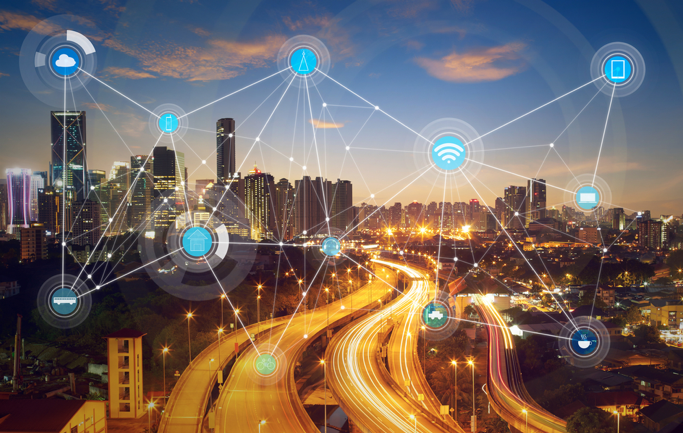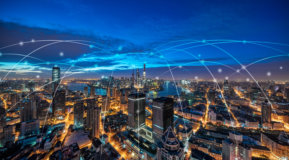 Ex Machina—loosely translated from the Greek phrase “from machine”, or if you’re a film buff, a reminder of a movie where a programmer was invited to administer the Turing test to an intelligent humanoid robot. In both scenarios, our common denominator is machine. The fact is, automation and machine learning are now no longer just a vision - they are finally here to help us, especially for protecting high-value corporate assets from advanced cyberattacks.
Ex Machina—loosely translated from the Greek phrase “from machine”, or if you’re a film buff, a reminder of a movie where a programmer was invited to administer the Turing test to an intelligent humanoid robot. In both scenarios, our common denominator is machine. The fact is, automation and machine learning are now no longer just a vision - they are finally here to help us, especially for protecting high-value corporate assets from advanced cyberattacks.
With more assets at stake, achieving adequate protection can only be achieved through human and machine collaboration.
In the first half of 2018, more than 4.5 billion data records were compromised.[1]. This begs the question: ‘What more can we do to stop these attacks?’
Machine learning-based security tools have emerged as being highly effective in protecting business from insider threats and advanced attacks. As a result, businesses are jumping onto this bandwagon, with large enterprise adoption rates 10 times higher than small businesses[2].
So, what is the big deal about machine learning?
Everything can be hacked
In the Transformers film series, the Decepticons created chaos and destruction in the house by taking control over humble household appliances such as the toaster and the vacuum cleaner. This doesn’t stray too far from real life due to the proliferation of IoT devices in the household and workplace. The attack surface area is proportional to the number of connected devices – the higher the number of devices, the larger the attack surface area.
Just recently, a Twitter user using the pseudonym of @TheHackerGiraffe hacked over 50,000 printers connected to the Internet to print out flyers telling people to subscribe to PewDiePie. Other than wasting paper, this hack might seem harmless. But imagine the havoc it would wreak if a criminal chose a more sinister outcome, stealing high-value assets such as customer and financial data, or intellectual property.
Automate or pay for it
From the clunky Robocop, to the sleek and shiny robots in the movie “I, Robot,” as well as for the above-mentioned humanoid in Ex Machina - we have seen the evolution of these machines throughout the history of sci-fi movies. But they’ve all served one purpose – to run tasks with optimum efficiency and stamina that humans can’t achieve themselves. With machine learning, systems can learn from data, identify patterns and make decisions with minimal human intervention. Just like how the Tesla Model 3 can avoid a crash in Autopilot mode, machine learning is also able to protect business assets by spotting very minute changes in behavior of people and IoT devices that often indicate inside attacks – efficiently cutting off the threat before it does damage.
Empowering humans
Enterprise investment in artificial intelligence (AI), machine learning, and robotic process automation (RPA) is set to hit US$232 billion by 2025[3], but this mass adoption does not mean that machines will overrule humans. AI provides an opportunity for organizations to ramp up automation efforts to radically improve operations and transform business models.
Moreover, with the implementation of the GDPR in May 2018[4], CSOs and CISOs are becoming primary targets of post-breach litigation. Through machine learning, security processes such as incident detection, investigation and reporting are being streamlined and automated. IT security teams are then able to focus on optimizing operations, enhancing the efforts of CSOs and CISOs to better focus on the overall protection strategy and alignment with corporate growth and other business objectives. However, machines are only able to supply data and insights, but it is up to people to provide judgment and creativity.
A productive yet secured environment
At the end of the day, what all businesses need is a productive and secure workplace, which utilize many of the same protection methodologies used for protecting the castle in the animated movie Beauty and the Beast. Like in workplaces that incorporate many types of network-connected devices, the story features myriad self-aware household objects to keep the castle operating smoothly. To ensure the castle is impenetrable, the Beast uses multiple layers of obstacles -- ranging from a moat, high-walls, heavy doors and thorny vines, in many ways, smart digital workplaces similarly protect high-value assets through a combination of tools, ranging from network access control systems, firewalls, and security systems based on machine learning and other AI technologies.
In the words of famed masked musicians, Daft Punk—Buy it, use it, break it, fix it, trash it, change it, mail, upgrade it— technology is constantly evolving. Just because businesses have made the technological jump and adopted automation does not mean that they are spared from the perils of cybersecurity threats. Hackers are getting smarter and so should our systems. There is a reason why emerging technologies such as machine learning are all the buzz today – they actually work and help businesses replace manual security tasks to optimize and improve operations, thereby creating greater efficiencies and cost savings for their human masters and business shareholders.
[1] https://www.networksasia.net/article/data-breaches-compromised-4-5-billion-records-1h-2018.1539237564
[2] https://www.zdnet.com/article/large-enterprises-are-adopting-emerging-tech-at-much-higher-rate-than-small-companies/
[3]https://www.techrepublic.com/article/ai-investments-will-hit-232b-by-2025-but-businesses-dont-plan-to-cut-jobs/
[4] https://www.zdnet.com/article/gdpr-an-executive-guide-to-what-you-need-to-know/




